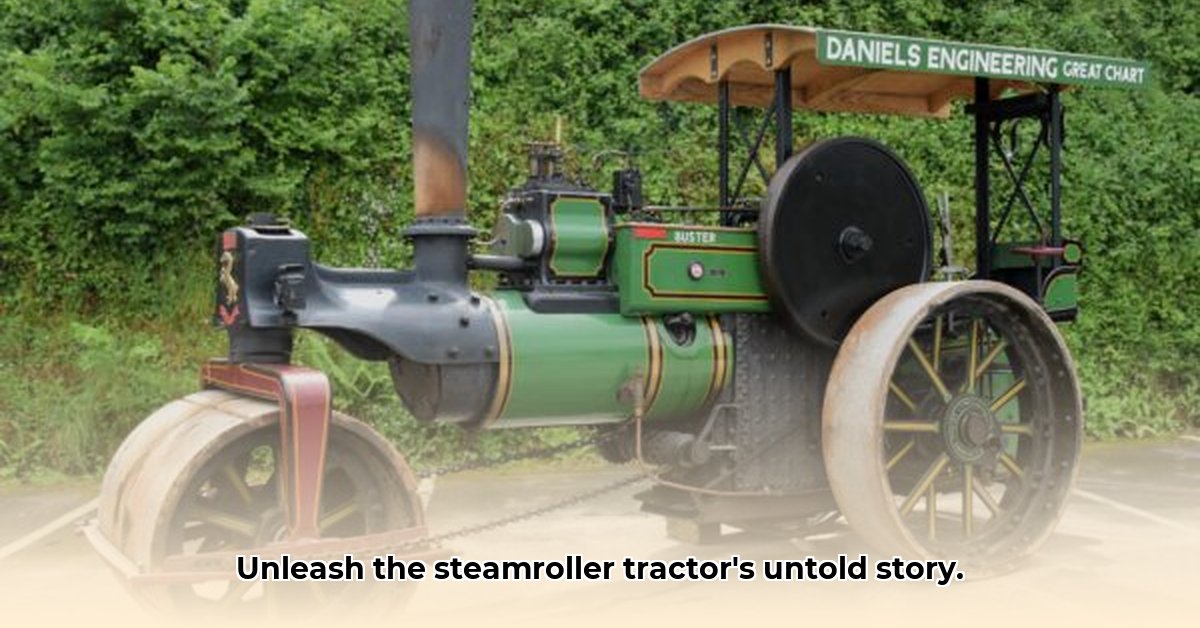
The rumble of a steamroller, a sound synonymous with bygone eras of road construction, speaks volumes about human ingenuity and the relentless pursuit of progress. More than just clunky machines, steamroller tractors were engineering marvels that fundamentally reshaped how we build and travel on roads. This isn't merely a dry recounting of facts; it's a narrative journey into the fascinating history of these giants, from their inception to their eventual eclipse. We'll delve into the design differences between manufacturers like Aveling & Porter and Russell & Co., explore their use on iconic roadways, and uncover the secrets behind their operation. But the story isn't solely mechanical; we'll also explore the human element, weaving in the stories of the people who built and operated these powerful machines. For more on tractor history, see this helpful site.
The Dawn of Road-Building Revolution
Before the smooth highways we take for granted, road construction was a grueling, labor-intensive process, reliant on human muscle and animal power. Road building was slow, expensive, and incredibly arduous. Then came the steam engine, a transformative force across various industries, and its potential for road building became apparent. This led to the creation of steamroller tractors – the muscle cars of their era – which revolutionized the field.
These early machines weren't aesthetically pleasing; they were powerful, clunky behemoths of iron and steam, prioritizing raw power over elegance. Imagine a massive metal box on wheels, with enormous rollers at the rear, driven by a roaring steam engine. The sheer size of these machines was intimidating, yet their efficiency in compacting earth and stone was undeniable. Projects that once took months could be completed in weeks, transforming trade, travel, and economic development. Considering the sheer scale of these early steamrollers, how did their operators manage such immense machines? Early operators required significant skill and strength, often needing teams to maneuver and maintain the machines.
Aveling & Porter and the Rise of Competition
Aveling & Porter quickly established themselves as a dominant force in the steamroller market. Their machines—renowned for their robustness and reliability—set a high benchmark for competitors. However, they weren't alone. Companies like Russell & Co. also contributed significantly, although detailed records of their early innovations are scarce, making complete historical reconstruction a challenge for researchers. Many early records were sadly lost or destroyed, leaving gaps in our understanding of this crucial period.
These early steamrollers operated on a relatively simple principle: a mobile steam boiler powering an engine driving the massive rollers. While conceptually straightforward, the simplicity belied the operational challenges. Boiler explosions posed a constant threat, demanding highly skilled operators and meticulous maintenance. Fueling these giants, often requiring a steady supply of coal or wood, added logistical complexity, especially in remote locations. Did the early steamrollers require specialized crews for their operation, potentially shaping the social dynamics of road-building projects? Yes, skilled engineers, firemen, and operators were essential, leading to specialized teams and a hierarchy of labor within the road-building process.
Engineering Evolution: Adapting to Challenges
The development of the steamroller wasn't linear. Early designs underwent continuous refinements to improve performance and efficiency. Engineers experimented with various roller configurations—tandem (two rollers) and tri-tandem (three rollers)—each offering unique advantages in stability and compaction effectiveness. The advent of asphalt as a widely used road material further spurred innovation, demanding advancements in maneuverability and precision. The need to easily reverse direction led to more sophisticated steering mechanisms.
The Internal Combustion Engine's Ascendance
The reign of steam power wouldn't last forever. The internal combustion engine, quieter, more fuel-efficient, and much easier to refuel, gradually emerged as a superior alternative. Its superior efficiency and reduced noise pollution made it a compelling successor. The transition was inevitable, with steamroller tractors gradually being phased out by their more modern counterparts. By the mid-20th century, the steam age in road construction was largely over. Given the clear advantages of internal combustion engines, why did steamrollers remain in use for as long as they did? Several factors played a role, including the initial high cost of internal combustion engines and the established infrastructure supporting steam-powered operations.
An Enduring Legacy
Despite their decline, steamroller tractors left an indelible mark. They laid the groundwork for our modern road systems, representing a pivotal chapter in engineering history. Numerous examples survive today, carefully preserved in museums or private collections, serving as testaments to the ingenuity of their creators. Their powerful image persists in popular culture, a symbol of a bygone era. Their presence at steam fairs attracts crowds, eager to witness a piece of history and appreciate their industrial might. The very sound of the steam engine remains a powerful and evocative symbol.
Hypothetical Steamroller Specifications: A Comparative Glance
| Feature | Aveling & Porter Model (Hypothetical) | Russell & Co. Model (Hypothetical) |
|---|---|---|
| Engine Type | Steam | Steam |
| Roller Configuration | Tandem | Tri-Tandem |
| Approximate Weight | 15 tons | 20 tons |
| Approximate Power | 60 hp | 80 hp |
| Approximate Year of Manufacture | 1910 | 1915 |
(Note: These specifications are illustrative examples. Actual historical data varies and often incomplete.)